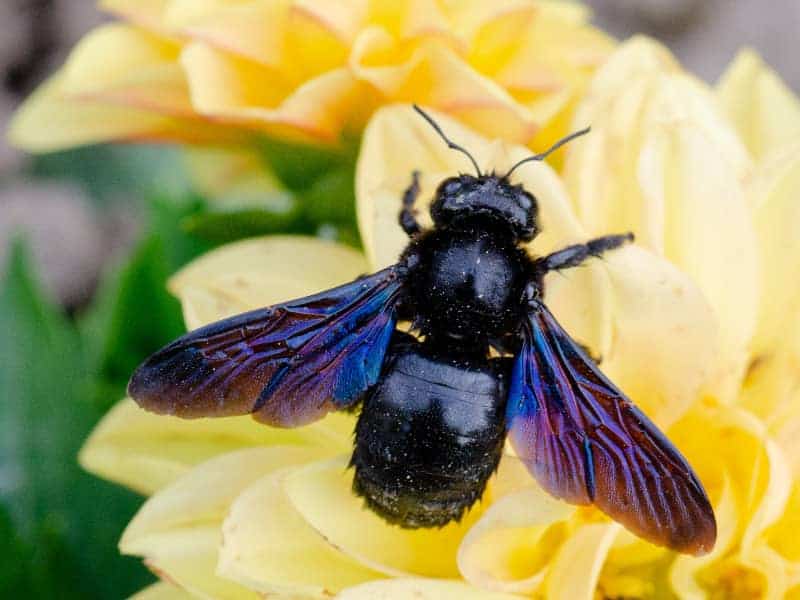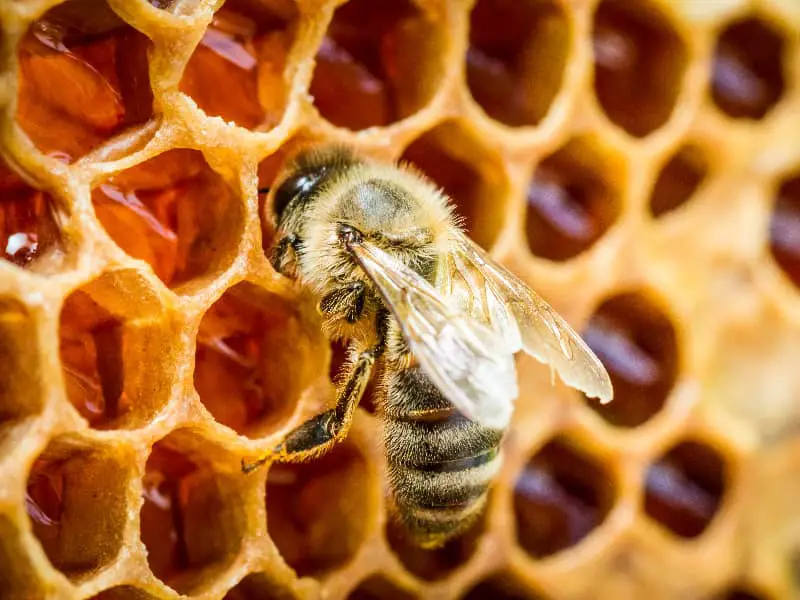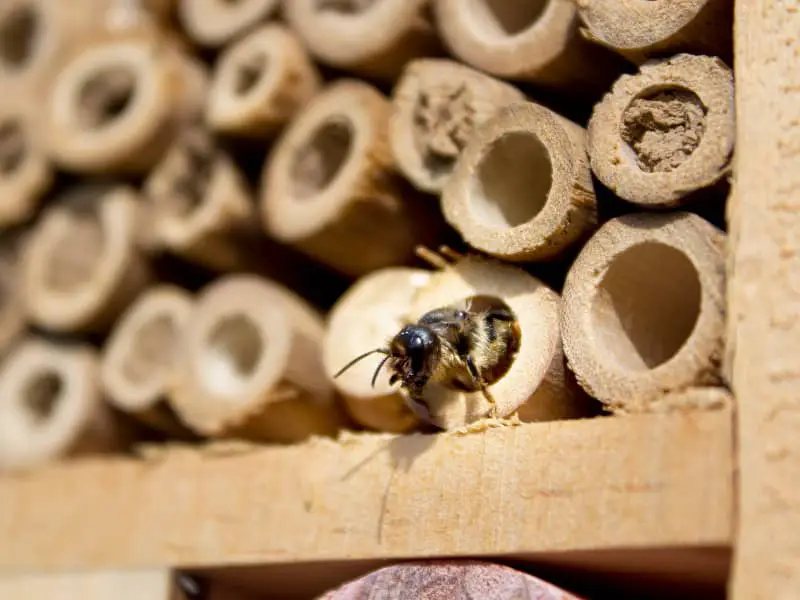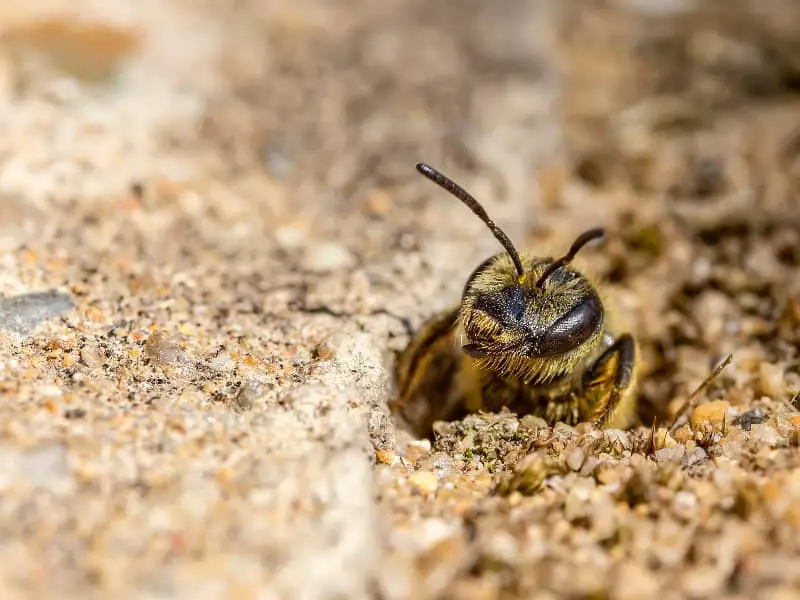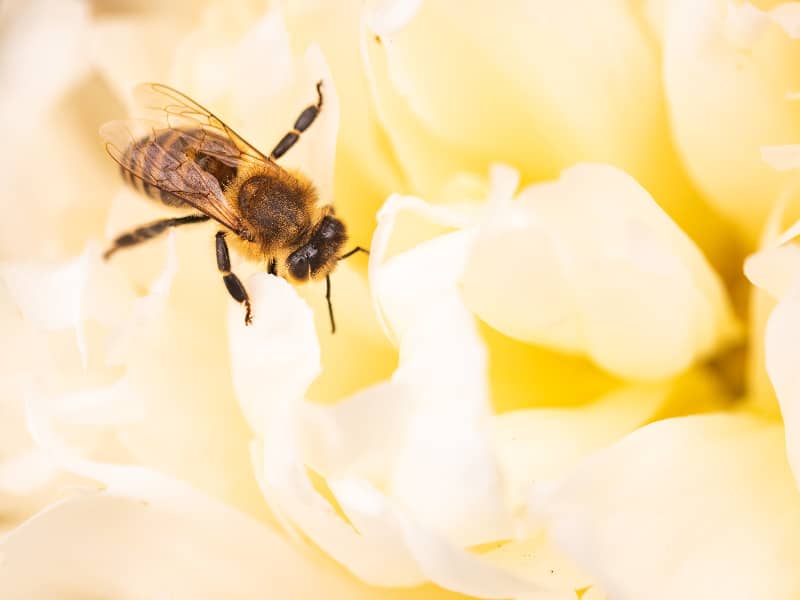
Bees in roller shutter box
A buzzing sound coming from the shutter box is not necessarily what most of us would expect. But this seemingly insignificant phenomenon can open the window to a fascinating world, that of bees. But why do bees choose to live in the shutter box? What happens in this hidden space and how should we behave?
Why do bees move into the shutter box?
Bees are constantly looking for suitable places to nest. A roller shutter box offers them protection from wind, rain and possible predators. It is a protected area that can also maintain a constant temperature. In addition, the entrance area is often narrow and difficult to access, which makes it difficult for enemies to enter the nest.
Houses and apartments are man-made structures that can also unintentionally provide habitats for various species. Shutter boxes are particularly attractive to bees in this respect, as they fulfill the conditions they need to build their nest.
How can you tell that bees are nesting in the shutter box?
The first sign that bees have chosen your shutter box as their home is often a constant buzzing. Especially during the warm months, when bee activity peaks, this sound can be audible. If you then also observe the bees flying back and forth at the shutter box, it is very likely that they are nesting there.
It is important to note that not every type of bee that moves into the shutter box forms a swarm. Individual species of bees, such as the mason bee, also like to nest in confined, sheltered spaces and tend to be solitary.
Is it safe to have bees in the shutter box?
Many people may feel uncomfortable with the thought of having bees so close to their living space. The good news is that most bee species that nest in shutter boxes are not aggressive. They are often wild bee species that do not sting unless they feel directly threatened.
Of course, there are exceptions. Some bee species can be more aggressive, especially if they see their nest threatened. In such cases, it is advisable to consult a professional to safely remedy the problem.
What should you do if you discover bees in the shutter box?
If you notice bees nesting in your shutter box, you should first remain calm. It is important not to disturb the area and make sure that neither you nor anyone else tries to remove the bees or destroy the nest.
In many cases, bees will move on by themselves after a while. However, if you have concerns about safety or possible allergies, you should contact a beekeeper or a pest controller. They can fix the problem professionally and safely.
It's also worth considering whether you want to support bees. They play an important role in our ecosystem and are essential for pollinating plants. There are several ways you can help them, for example by offering food or shelter.
The safe relocation of bees
If you decide to relocate the bees from your shutter box, this should be done with extreme care. Improper relocation can be risky for both the bees and you.
- Contact experts: Before you take action, contact an experienced beekeeper or an organization that specializes in relocating bees. These professionals have the necessary equipment and know-how to relocate the bees safely.
- Avoid provoking the bees: Until the relocation takes place, you should avoid any disturbance to the bee site. Loud noises, sudden movements or attempts to open the box can unnecessarily disturb the bees.
- Best time for resettlement: Evening or early morning hours are optimal for relocation. At these times bees are less active and it is more likely that the majority of the swarm is in the nest.
Prevention: How do you prevent bees from moving into your shutter box?
It's always better to be proactive than to have to deal with an existing problem. Here are some tips on how to prevent bees from moving into your shutter box in the first place:
- Install nets or grids: A fine mesh net or screen over the entrance openings can prevent bees and other insects from entering the shutter box.
- Pheromone traps: There are special pheromone traps that attract bees and keep them from entering unwanted areas. These are usually harmless and can be an effective preventive measure.
- Natural repellents: Certain scents, such as lemongrass oil or peppermint oil, can serve as a natural repellent. A few drops near the shutter box can help keep bees away.
Bee friendly garden
While you may not want bees nesting in your shutter box, you can still welcome them into your garden. By planting bee-friendly plants and installing bee houses, you'll encourage the bee population and help them find safe and nutritious habitats.
Plants such as lavender, sunflowers or clover are particularly attractive to bees. Providing a water source can also help, especially on hot days.
Conclusion: Bees in the shutter box
Human encounters with bees, especially in urban environments such as the roller shutter box, are a striking illustration of how closely intertwined nature and human constructs really are. Bees, like many other creatures, search for safe shelter and food sources, and sometimes this search leads them to unexpected places.
While there are understandable concerns about safety and comfort, with the right knowledge and resources, we can ensure that these encounters are positive for both parties.
Relocation of bees from shutter boxes should always be approached with caution and expertise. At the same time, preventative measures can help keep bees from moving into these areas in the first place. But instead of just keeping them out, we can also become proactive and provide them with a safe and nutritious habitat in our gardens and balconies.
At a time when awareness of the need to protect the environment and preserve biodiversity is constantly growing, it is important that we learn to live in harmony with the wildlife around us. Bees are just a small but crucial part of this bigger picture. Their presence in our immediate habitats can remind us of the importance of ensuring a balanced and respectful coexistence with nature.
Author

-
Garden animal - A life with nature
Welcome to my animal blog! My name is Dirk and I am happy to take you on my journey through the fascinating world of animals and gardening.
Born 54 years ago, I have had an insatiable curiosity for the animal world around me since childhood. Although I have moved professionally in other industries, my true passion has always been animals and nature. It is remarkable how a small garden has become such an important part of my life.
Many of my fondest memories are associated with the animals that share our home. Whether it's the curious squirrels that scurry across the trees in the morning, the colorful variety of birds that visit our feeders, or the busy bees and butterflies that pollinate our flowers, every moment with them is invaluable to me.
This blog is my contribution to share my experiences, discoveries and insights with like-minded people. Here I will share stories of unforgettable encounters with animals, give tips on gardening and creating wildlife-friendly habitats, and take you on my journeys through nature.
Thank you so much for being here!
Cordial,
Dirk aka garden animal
Last posts
- 27. February 2024PetsVeganes Hundefutter – Grün und Gesund?
- 18. January 2024ChickensOregano für Hühner
- November 27, 2023HamsterDiurnal hamsters
- November 24, 2023HamsterHamster hammock



